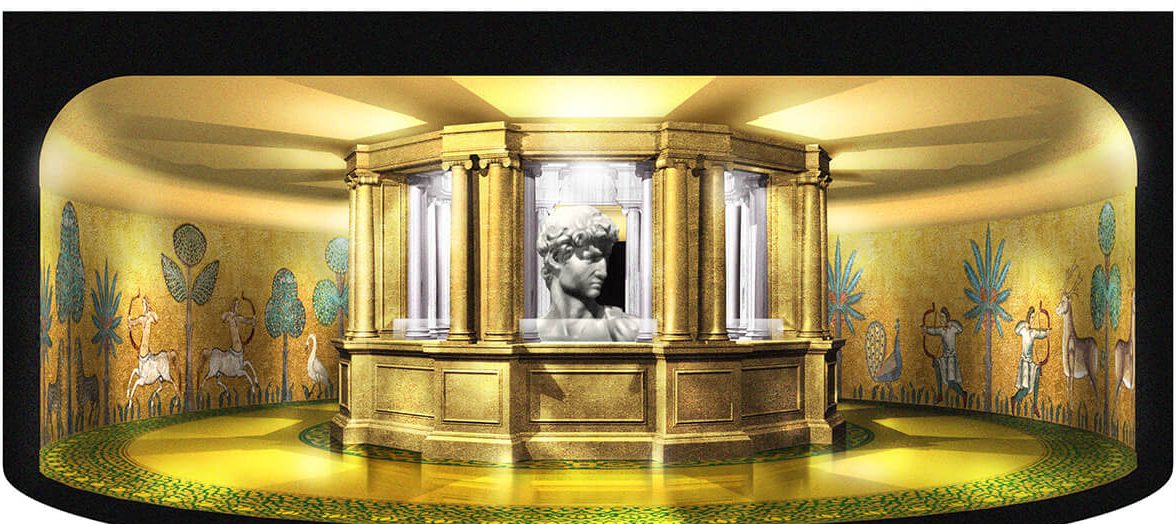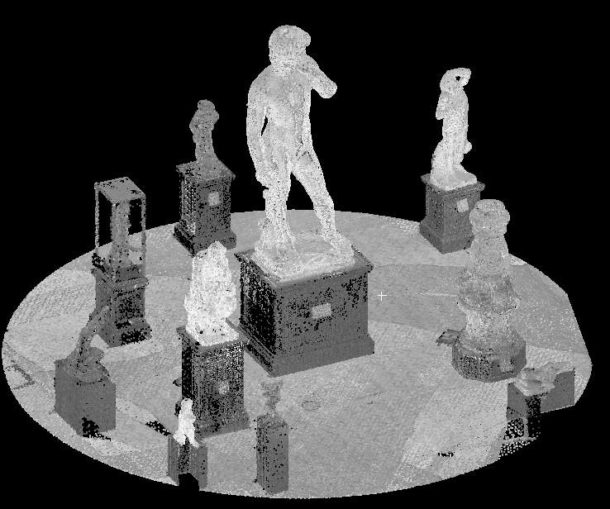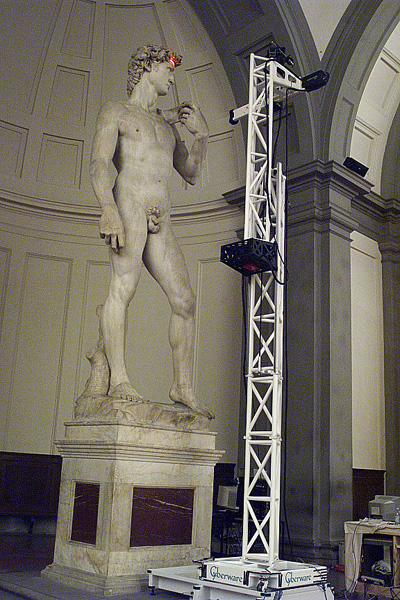A group of Italian architects and engineers will create a digital twin to replicate Michelangelo’s statue, David, for the Dubai Expo 2021. This project, backed by the Galleria dell’Accademia, aims to showcase the advantages of using 3D printing in art. The statue will be the first replica authorized by the Museum after Cecile Hollberg, Director of the Accademia, won a copyright battle over it in 2017.
The team representing the Italy Pavillion at the Expo, will combine photogrammetry and laser scanning to create a replica of the statue. The project intends to expose the merger between Industry 4.0 and the beauty of historic art. The statue is going to be the centerpiece of the pavilion, situated as if it were connecting earth and sky. To inaugurate the 1-year countdown, the team held a press conference in Florence discussing the launch of the new project.
“The meaning of this operation is to introduce visitors in Expo Dubai to the multidisciplinary skills associated with digital culture, linked to digitalisation and collective intelligence made possible thanks to the reuse of information.” Said Paolo Glisenti, Commissioner General of Section for Italy at Expo Dubai at the press conference.

The project
Located in the Galleria dell’Accademia in Florence, Michelangelo’s David was created between 1501 and 1504, its body measures 17 ft. in length and 6.5 ft. in width. The initiative is backed by the expertise of architects and engineers from the University of Florence and operates under the supervision of the Italian Commissioner’s Office for Expo 2020 Dubai. The replica will be created by scanning the original statue and using that data to reproduce a 3D printed copy.
Italy’s Pavillion stands as a “theatre of memory” said Davide Rampello, curator of the exhibition. Having a digital twin of a historical statue which represents the zenith of beauty and legacy of art, allows for these values to be extended in time. As the replica will be the only authorized copy of the David in circulation, if something were to happen to the original, this replica would be a valid replacement. Moreover, having a machine reproduce the David as opposed to a sculptor, means the copy will still be faithful to Michelangelo’s skills as they are accurately captured by the digital scan, rather than manually imitated.

Design and Structure of the David
The reproduction of the David is divided into three phases which merge technological and craftsmanship skills. A large tripod will be used to take the measurements using active and passive sensors. Both sensors will process a dense point cloud, which is a version of the David made up of tiny data points, with each point having its respective 3D coordinates. Photogrammetry, a process that uses electromagnetic radiant imagery to acquire information, will also be used in the process. Once this process is completed the team will have a full digital copy of the David.
Next, the team will have to physically reconstruct the statue. “We will use a printer that will allow us to fragment as little as possible, in order to avoid problems associated with the gluing of pieces, which would result in a deformed replica” explained Grazia Tucci from the University of Florence at the press conference. As for the materials, sustainable plastic and various resins are being investigated as possible choices for the project.
In order to enhance and preserve the aesthetics of the statue, the final step involves craftsmen manually restoring the statue and engineers milling the surface.

Past Davids
There are about 32 statues of David in different cities of the world. The statue has been wildly replicated as it is a universal symbol of beauty and goodness.
In 1997, with the aim of advancing the technology of 3D scanning, Stanford University and University of Washington produced a digitized replica of the entire David. The statue was scanned using Cyberware’s Stanford Large Statue Scanner and the unattainable parts were captured using a triangular laser range finder. Finally, the architectural setting of the statue was scanned with a prototype time-of-flight laser range finder.
In 2017, Ridley Scott also replicated the David, for his film Alien: Covenant. An existing copy in the V&A Museum was scanned using a telescope tripod from different angles. The statue was then constructed in polystyrene over a steel armature which was attached to a base plate for support. The refinishing consisted of meddling the polystyrene slices and smoothing the surface with thin plaster hard coats.
As a means of experimentation with their new equipment, Swiss micro 3D printing company, Cytosurge used FluidFM® µ3Dprinter to recreate a micro version of Michealangelo’s David in copper.
3D printing statues
For the past 25 years, communities have been experimenting with the idea of 3D printing replicas of cultural heritage to preserve ancient art, but also to enhance the experience for the viewer.
Past examples of preserving art, in the of theft, include a project led by Wakayama Technical High School in Japan that saw a group of students 3D print replicas of treasured statues. The replicas were placed in the place of the originals so that the latter were stored safely.
Elsewhere, a team from Zhejiang University have created movable copies of ancient Buddhist statues. Similarly to the Italian team, their aim was to use 3D printing as a means of conserving art.
As for enhancing how people perceive art, a collaboration between Texas-based 3D scanner manufacturer, NVision, and Nasher Sculpture Center used 3D printing as a means to connect the visually impaired to art. They 3D printed replicas of historical sculptures, so that the visually impaired could touch the statues.
Subscribe to the 3D Printing Industry newsletter for the latest news in additive manufacturing. You can also stay connected by following us on Twitter and liking us on Facebook.
Looking for a career in additive manufacturing? Visit 3D Printing Jobs for a selection of roles in the industry.
Featured image shows the 17 ft. tall David being restored in the Museo Dell’Accademia, Florence. Photo via ANSA.

